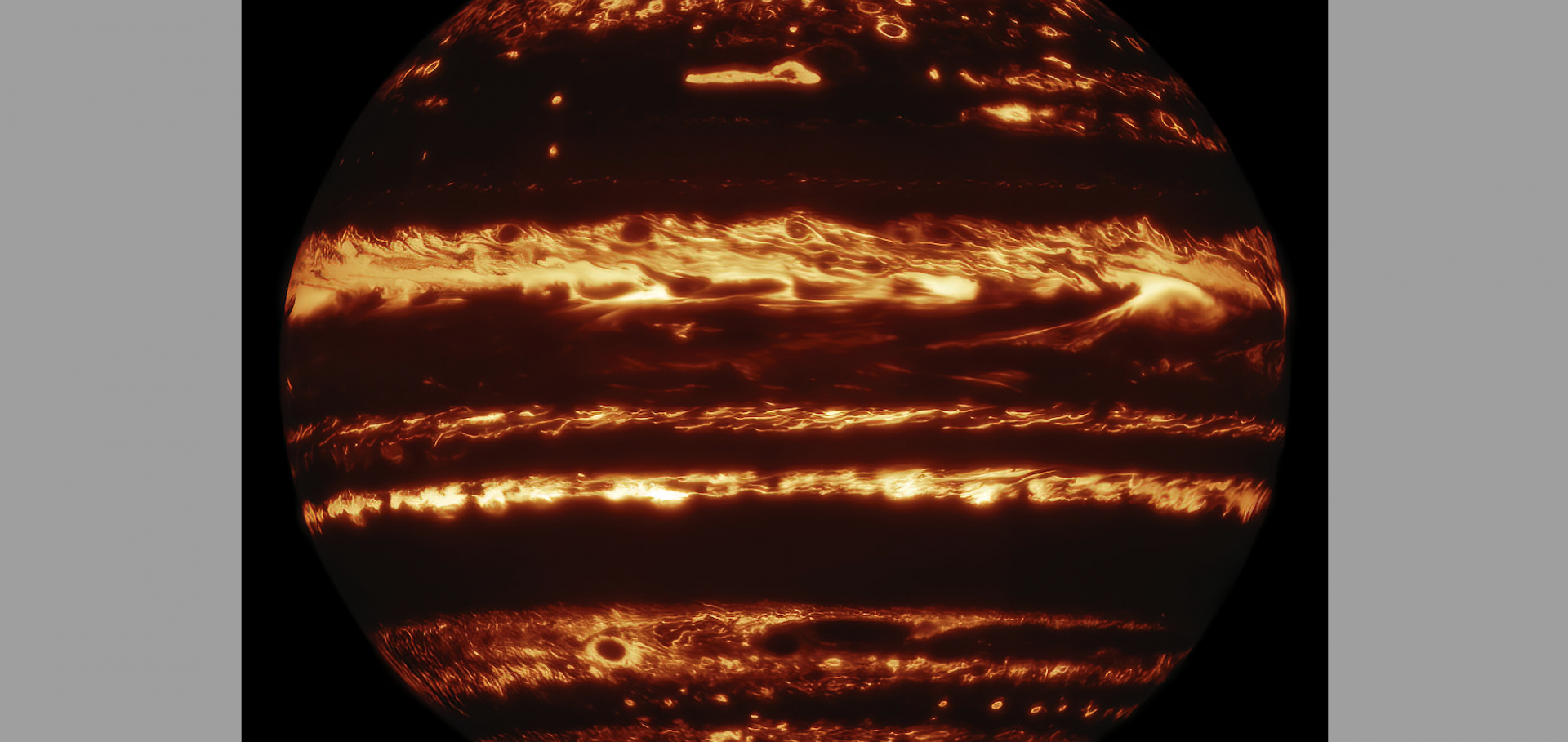Atmospheric circulation of brown dwarfs and directly imaged exoplanets driven by cloud radiative feedback: effects of rotation
Monthly Notices of the Royal Astronomical Society Oxford University Press 502:1 (2021) 678-699
Abstract:
Observations of brown dwarfs (BDs), free-floating planetary-mass objects, and directly imaged extrasolar giant planets (EGPs) exhibit rich evidence of large-scale weather. Cloud radiative feedback has been proposed as a potential mechanism driving the vigorous atmospheric circulation on BDs and directly imaged EGPs, and yet it has not been demonstrated in three-dimensional dynamical models at relevant conditions. Here, we present a series of atmospheric circulation models that self-consistently couple dynamics with idealized cloud formation and its radiative effects. We demonstrate that vigorous atmospheric circulation can be triggered and self-maintained by cloud radiative feedback. Typical isobaric temperature variation could reach over 100 K and horizontally averaged wind speed could be several hundreds of $\, {\rm m\, s^{-1}}$. The circulation is dominated by cloud-forming and clear-sky vortices that evolve over time-scales from several to tens of hours. The typical horizontal length-scale of dominant vortices is closed to the Rossby deformation radius, showing a linear dependence on the inverse of rotation rate. Stronger rotation tends to weaken vertical transport of vapour and clouds, leading to overall thinner clouds. Domain-mean outgoing radiative flux exhibits variability over time-scales of tens of hours due to the statistical evolution of storms. Different bottom boundary conditions in the models could lead to qualitatively different circulation near the observable layer. The circulation driven by cloud radiative feedback represents a robust mechanism generating significant surface inhomogeneity as well as irregular flux time variability. Our results have important implications for near-infrared (IR) colours of dusty BDs and EGPs, including the scatter in the near-IR colour–magnitude diagram and the viewing-geometry-dependent near-IR colours.Atmospheric circulation of brown dwarfs and directly imaged exoplanets driven by cloud radiative feedback: global and equatorial dynamics
Monthly Notices of the Royal Astronomical Society Oxford University Press 502:2 (2021) 2198-2219
Abstract:
Brown dwarfs, planetary-mass objects and directly imaged giant planets exhibit significant observational evidence for active atmospheric circulation, raising critical questions about mechanisms driving the circulation, its fundamental nature and time variability. Our previous work has demonstrated the crucial role of cloud radiative feedback on driving a vigorous atmospheric circulation using local models that assume a Cartesian geometry and constant Coriolis parameters. In this study, we extend the models to a global geometry and explore properties of the global dynamics. We show that, under relatively strong dissipation in the bottom layers of the model, horizontally isotropic vortices are prevalent at mid-to-high latitudes while large-scale zonally propagating waves are dominant at low latitudes near the observable layers. The equatorial waves have both eastward and westward phase speeds, and the eastward components with typical velocities of a few hundred m s−1 usually dominate the equatorial time variability. Lightcurves of the global simulations show variability with amplitudes from 0.5 per cent to a few percent depending on the rotation period and viewing angle. The time evolution of simulated lightcurves is critically affected by the equatorial waves, showing wave beating effects and differences in the lightcurve periodicity to the intrinsic rotation period. The vertical extent of clouds is the largest at the equator and decreases poleward due to the increasing influence of rotation with increasing latitude. Under weaker dissipation in the bottom layers, strong and broad zonal jets develop and modify wave propagation and lightcurve variability. Our modelling results help to qualitatively explain several features of observations of brown dwarfs and directly imaged giant planets, including puzzling time evolution of lightcurves, a slightly shorter period of variability in IR than in radio wavelengths, and the viewing angle dependence of variability amplitude and IR colors.The atmospheric circulation of ultra-hot Jupiters
Astrophysical Journal American Astronomical Society 886:1 (2019) 1-20
Convection Modeling of Pure-steam Atmospheres
ASTROPHYSICAL JOURNAL LETTERS 923:1 (2021) ARTN L15
Jet streams and tracer mixing in the atmospheres of brown dwarfs and isolated young giant planets
Monthly Notices of the Royal Astronomical Society Oxford University Press 511:4 (2022) 4861-4881


